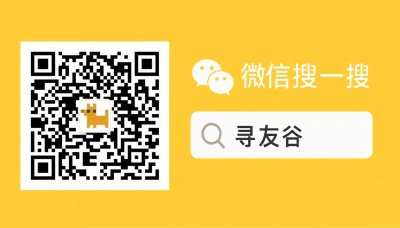Why adding people on WeChat still feels like a small mystery for US folks in China
Last month, I ran into three new international students outside the gate at Tsinghua — nervous smiles, suitcases, and the same question: “How do I add classmates on WeChat without sounding clueless?” It’s one of those tiny daily frictions that becomes a headache fast if you don’t know the rules. WeChat runs China’s social life: study groups, rental contacts, campus clubs, gym buddies, and yes — the group chat where someone announces last-minute library seat openings. For Americans living in China or prepping to arrive, the mechanics of adding contacts, plus privacy and safety habits, are the baseline you want sorted before your first semester slip-up.
Adding contacts on WeChat is simple once you know the tricks — QR codes, phone numbers, WeChat IDs, nearby people, and even business-card scans. But reality tastes different: different universities, official groups, and local services sometimes demand Chinese-language fields, and platform features evolve. Meanwhile, broader policy moves like China’s changes to talent visas and app ecosystem shifts are reshaping how students and professionals connect here — meaning you may need to adapt the way you present yourself on the app as well as how you find people. For context, China’s K-visa and other talent initiatives are changing who’s moving here and how they network, and changes in app availability affect where people meet online before switching to WeChat for real-life coordination [NDTV, 2025-11-10].
This guide walks through the practical steps — plus a few streetwise tips — so you can add classmates, landlords, campus services, or friends without the awkward “Do you have WeChat?” tango. I’ll also show how current global app trends and student-migration policy shifts change the social workflow you’ll probably use.
Practical ways to add someone on WeChat — step-by-step, with real-world tips
WeChat gives you several reliable routes to add people. Pick the one that fits the situation: quick IRL meetups use QR codes; formal contacts might use WeChat ID or phone numbers; strangers from a forum use Group QR or invitation links. Below are the main methods and the concrete steps for each, plus when to use them.
- Scan a WeChat QR code (best for face-to-face)
- Open WeChat → Discover → Scan (or use the camera icon in Chats).
- Point at the person’s QR code on their phone; hold steady until it recognizes.
- Tap “Add to Contacts,” write a short note (optional), and choose a friend label (e.g., “Tsinghua — Econ 101”). Why it works: QR is the lingua franca in China — fast, encrypted, and avoids needing a phone number. Keep a screenshot of your personal QR in case the network is flaky.
- Add by WeChat ID / Username (good for remote adds)
- Ask for their WeChat ID (people often have a short username).
- In WeChat, go to Contacts → New Friends → Search by WeChat ID.
- Type the ID, send a verification message with your name and context (e.g., “Hi — I’m Alex from BU, joining your study group”). Why it matters: After apps like WhatsApp started letting usernames, social login behavior worldwide shifted; in China WeChat IDs have long been standard. If someone’s privacy settings limit searches by ID, you’ll need another route.
- Add by phone number (useful if you already have the contact)
- Save the person’s number in your phone with a clear name (include institution or group).
- Open WeChat → Contacts → New Friends → Mobile Contacts.
- Tap “Sync Contacts” (if permitted) and invite or add. Caveat: Many foreigners use roaming or non-Chinese numbers; this works but sometimes people prefer not to sync numbers for privacy.
- From a group chat or Moments (when you’re already partly connected)
- Open the group, tap the member list, find the person’s name, then tap “Add Contact.”
- For Moments: tap their profile from the post and then “Add to Contacts.” This method is polite — you already share context (class, dorm, or interest).
- Using “People Nearby” or “Shake” (casual meetups)
- People Nearby: Discover → People Nearby; shows other users within range. Tap to view and add.
- Shake: Discover → Shake; both users shake at the same time to match. Use with caution: these expose location-based info. In a big campus setting it’s handy, but avoid at night or in sensitive places.
- QR codes for groups and business cards (for events and services)
- Event organizers often post a group QR code; scan to join and then introduce yourself in the group.
- For businesses and apartments, landlords often give a QR. Verify identity and ask for rental agreement proof before transfers.
Practical safety habits (don’t be naive)
- Always include context in your verification message: name, school, class, or mutual contact. People ignore blank requests.
- Don’t send money or personal documents to new contacts without verification.
- Check Moments or mutual groups for basic legitimacy. If someone’s profile looks empty or brand-new, confirm with a classmate or the official university account.
- Popular app shifts and removals affect where people originate: apps being pulled (e.g., removals from app stores) mean you might not find people on alternative platforms anymore, so expect WeChat to be the final meeting place [Wired, 2025-11-10].
How broader trends change the way you add contacts
- The flow of international students and professionals is changing. With some countries adjusting student visa policies and China introducing talent-focused visas, the composition of campus groups is evolving. New cohorts mean more people who might prefer WeChat IDs over phone numbers or vice versa; expect mixed behaviors and be adaptive [Economic Times, 2025-11-10].
- Be ready for username-based contact options on other platforms (WhatsApp, Instagram) to influence expectations. The UX trend worldwide toward usernames — rather than phone-only identity — means more people will give you an ID instead of a number. That’s convenient if you can’t dial their country code.
🙋 Frequently Asked Questions (FAQ)
Q1: What’s the fastest way to add a classmate right after a lecture?
A1: Use QR code or group member list. Steps:
- Ask: “Can I scan your WeChat QR?” (Most people will display it).
- Open WeChat → Discover → Scan → point at QR.
- Send a one-liner verification: “Hi, I’m [Name], we sat in [Class] today — joining the study group.”
- If the QR fails, ask to search by WeChat ID or add from the group chat later. If you want a checklist: (1) take a screenshot of your QR, (2) save their WeChat name with class tag, (3) mute the group if it’s noisy.
Q2: Someone asked for my phone number to add me — should I give it?
A2: It depends on the context. Steps and safety tips:
- Prefer sharing your WeChat QR or ID first. That keeps your phone number private.
- If you must give a number, provide one you’re comfortable with — consider using a secondary number (local SIM or campus number).
- After they add you, check their Moments and mutual groups to confirm identity before sharing sensitive info.
- If you’re uncomfortable, say: “I prefer QR/WeChat ID — saves me typing the number.” Most people understand.
Q3: I joined a group via QR but want to find an individual inside — how?
A3: Use the group member list and search:
- Open the group → tap the top area to enter Group Info → Members.
- Scroll or use the search field to find the person by WeChat name.
- Tap their avatar → Add Contact (or Send a message directly). Roadmap for verification:
- Introduce yourself in the group: “Hi, I’m [Name], new here — friend of [mutual].”
- If the person doesn’t respond, message another group admin to confirm identity.
Q4: My WeChat ID search is blocked — what do I do?
A4: Privacy settings may restrict search by ID. Workarounds:
- Ask for their QR code or add through a mutual group.
- Sync your phone contacts if you have their number saved (Contacts → New Friends → Mobile Contacts).
- Ask them to change settings temporarily: Me → Settings → Privacy → Allow others to find me by WeChat ID (toggle on), then change back.
Q5: How do I safely add landlords, tutors, or sellers I meet online?
A5: Steps and verification:
- Ask for the business license, rental contract, campus ID, or student card photo (for tutors).
- Use a quick video call on WeChat to confirm identity before any money transfer.
- Meet briefly in public (campus admin office or public cafe) if possible.
- Keep transaction records and prefer using WeChat Pay only after you’re certain — and if you must pay, use escrow or formal invoicing where available.
🧩 Conclusion
For United States students and residents in China, adding someone on WeChat is less about taps and more about context. Use QR codes and IDs for quick connects, phone numbers when necessary, and group features to bridge introductions. Remember: the fastest add method isn’t always the safest. With student flows changing due to visa and study policies, you’ll meet more people who prefer different ways to be found online — stay flexible.
Quick checklist:
- Carry your QR code screenshot and set a clear WeChat ID.
- Always include context in verification messages (name, school, class).
- Verify landlords, tutors, and service providers before money or documents change hands.
- Join official campus WeChat accounts and verified groups to reduce impersonation.
📣 How to Join the Group
Want the short-cut? Our XunYouGu community is a low-drama place where students and Americans in China swap living tips, verified landlords, and study-group invites. How to get in:
- On WeChat, search for “xunyougu” in Official Accounts and follow it.
- Message the official account with your name and school, and ask to be invited into the country-specific group.
- Alternatively, add our assistant WeChat (look for the contact on the xunyougu.com directory) and request the invite — we’ll vet you quickly, no nonsense.
We keep it friendly: useful posts, verified contacts, and zero spam. Join if you want fewer small disasters and more real help.
📚 Further Reading
🔸 K-Visa, China’s Competition To The US In Wooing Global Tech Talent
🗞️ Source: NDTV – 📅 2025-11-10
🔗 Read Full Article
🔸 Canada exempts some students from study permit caps starting 2026
🗞️ Source: Economic Times (India) – 📅 2025-11-10
🔗 Read Full Article
🔸 Apple Pulls China’s Top Gay Dating Apps After Government Order
🗞️ Source: Wired – 📅 2025-11-10
🔗 Read Full Article
📌 Disclaimer
This article is based on public information, compiled and refined with the help of an AI assistant. It does not constitute legal, investment, immigration, or study-abroad advice. Please refer to official channels for final confirmation. If any inappropriate content was generated, it’s entirely the AI’s fault 😅 — please contact me for corrections.

